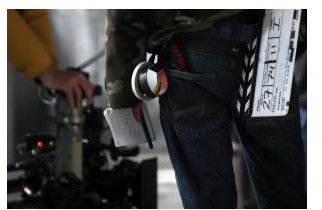Tips and Tricks for Using Tracking Shots in Your Digital Video Project
On the Move
Camera movement is an integral part of feature filmmaking, oftentimes adding energy and keeping the flow of the movement that happens in front of the camera. Though much of the movement you see will be slight, or small scale - camera movements to follow the small movements by the actors - there is a different operation for the larger types of camera moves. If you want to follow the consistent movement and travel of a character, you will have to move the camera’s actual position, following them. This can be called a tracking shot and often uses a film dolly, a platform that the camera rests on with wheels to aid in movement. This tracking shot is not as easy as it sounds and requires some very specific techniques to make it work.
Rehearsal and a Track
The majority of tracking shots using a film dolly are well rehearsed by the camera department in conjunction with the blocking of the actors. This is done because a dolly motion will not remain fluid and useful if they are done on the fly, and usually will use a track so that it will track even more smoothly. This is important both because you need to keep the subjects in focus and because you do not want the audience to become too aware of the camera motion. A tracking shot is not a dramatic or jerky motion, but instead a smooth long motion that is meant to follow the action and not overwhelm it.
To do it correctly you will need to rehearse it several times before you actually film it. This is because it is acting in the same way the performers are, moving around in relation to the other elements of the scene. Do this several times, keeping an eye on how this captures the environment and the actors and whether or not it meets the technical needs of the move.
Perspective
The perspective of the camera in relation to the actors can dramatically affect the dolly shot that you are performing. You can position this in front of the actors to move backwards as they walk toward it; to the side to pan across as they walk; behind to follow them; or really any variation to get what you want. Each one of these reflects a different point of view on the scene and provides its own technical benefits and limitations. The way these shots are negotiated need to meet the needs of your production and you have to compare the different aspects of it to figure out what you want.
For example, a side shot is often used so that you keep the subjects smaller in the frame and allow for either multiple characters or more of the environment in the frame. This will require both a situation where a lot of discussion is happening or a montage, not an intimate moment that would need a closer frame. It would also require an open area in between the camera and track and the subjects, which means a much larger production area. There are these considerations for all possible tracking shots, and you will have to keep the principles of imaging in mind.
Camera in Position
If you want to dial down the appearance of the camera movement then you will want to open up to a wide angle in your camera. This will require you to stay closer to your subjects, but will also make the movement be less intrusive. In some ways, this will actually look as though no movement is happening unless you are looking at the background scene. This will be especially important to do the rehearsal and to make sure that the assistant camera person is pulling focus very specifically. This will also require marks to be set along the track or walking area, and make sure to think about points where you would cut away from so that you can orchestrate movement at those points.
You may want to keep the camera steady yet on a hydraulic tripod head that will allow for motion. This will give you the freedom to do very slight camera movements in relation to the character, which is actually much more smooth on the final product than keeping it fixed. This will also help you deal with any interferences on the floor or in the track, such as cracks or bumps that could affect the final image. Having the ability to stay fluid all the way through is going to be of critical importance if you are going to create seamless tracking shots.
References
Based on author’s own experience.
Image credit:
